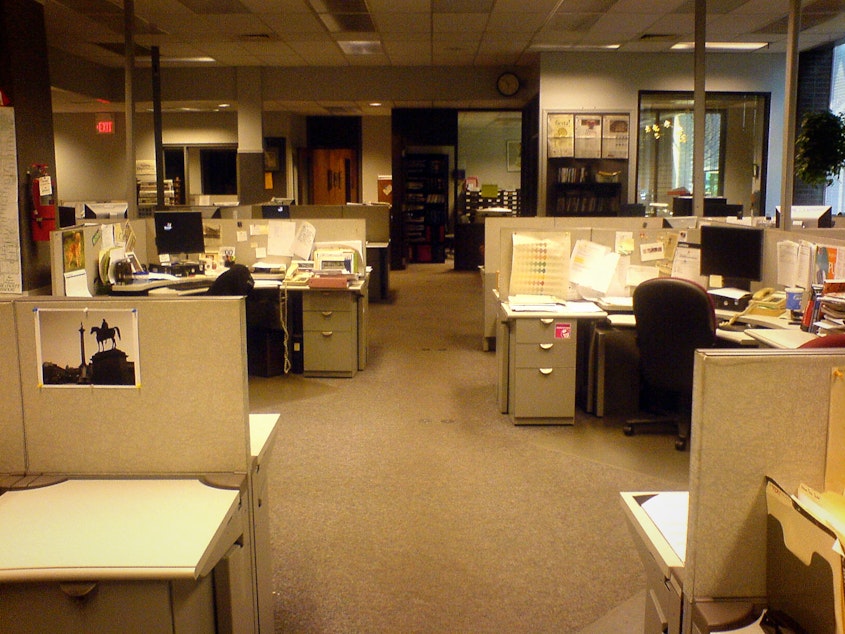What do you do when there's no local news source? You make one

Between 2004 and 2019, more than a quarter of the country’s newspapers disappeared. Here in Washington, people are trying to fix that.
According to the University of North Carolina’s Hussman school of Journalism, more than a fourth of the country’s newspapers disappeared between 2004 and 2019.
Here in Washington state, there’s just one county without a newspaper — Asotin County in the southeastern corner of the state, bordered by Oregon and Idaho.
When you live somewhere that doesn’t have a newspaper, what do you do? For some people, the answer is simple: you start one.

Danny Stusser began publishing the JOLT out of necessity.
"When I moved to Olympia, in 1995, the Olympian, which is the daily paper published by McClatchy, they had about 20 people in their newsroom," he said. "That was when the Thurston County population was about 180,000 people. Now we have just shy of 300,000 people. The Olympian has somewhere around six people in their newsroom."
The JOLT is a small, online news publication covering Olympia, Lacey and Tumwater.
Stusser isn't a journalist by training, and he's working with a small team — three part-time reporters and five columnists.
"Our commitment is to cover all the public meetings in our three cities and the county," he said. "We have a list that is about 100 different kinds of commissions and boards and councils that we try to cover."
That's not cheap. Stusser says the JOLT currently has enough funding to cover around four months of production. They're still trying to figure out the rest.
Sponsored
The team at Gig Harbor Now went into this with a plan.
Gig Harbor sits on the peninsula in Pierce County. It’s a town of around 12,000 people. And until recently, it didn’t really have a newspaper. So when Jenny Wellman and Pat Lantz, along with a committee, launched Gig Harbor Now last year, they did it with a plan.
"When we started this back in the first part of 2021, we sort of started this very small friends-and-family campaign just to raise money to get us through to the start," said Wellman. "Then through this news match program, we wound up raising a pretty nice chunk of money. So that set us up for the start of the year with funding."
Like Stusser, neither Wellman nor Lantz are journalists. They're just people who want a news source in their community.
They're not alone. According to the Poynter Institute for Media Studies, since the pandemic began, more than 70 local newsrooms have opened across the country.
Sponsored
Five of those are here in Washington. They’re in Gig Harbor, Lake Stevens, a couple in Bellingham and of course the JOLT in Olympia/Tumwater.
And that's a good thing for local communities.
But according to Rachel Moran, a postdoctoral fellow at the University of Washington's Center for an Informed Public, it comes with caveats.
"We've seen sort of a democratization of journalism in a way that has actually been caused by this sort of wavering trust in mainstream news," Moran said.
"It does test the boundaries of what is news versus what is just information or what is content," Moran said. "When we open those floodgates, we're really opening them to anyone to come in and say, 'I'm a journalist; I've produced journalism.'
Sponsored
"But there's no badge of approval. It's not like you're a doctor and you have to have a license to be a journalist."
Now, she said, those new local organizations just have to find a way to survive.
"Hopefully, those hyperlocal outlets can grow and find a financially stable way to produce local content," Moran said. "So the same cycle doesn't happen again, where they end up having to be bought out in order to keep the lights on."


